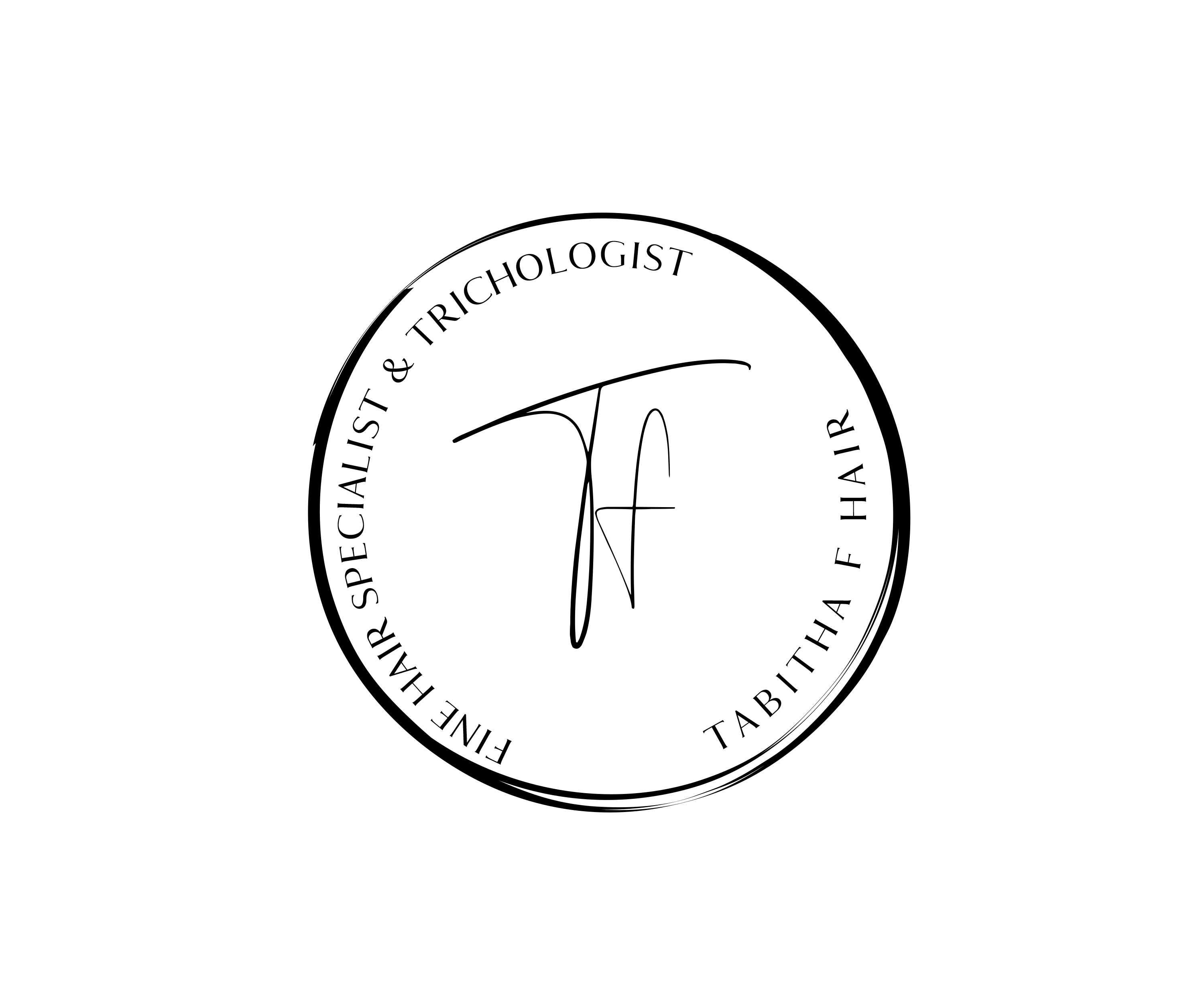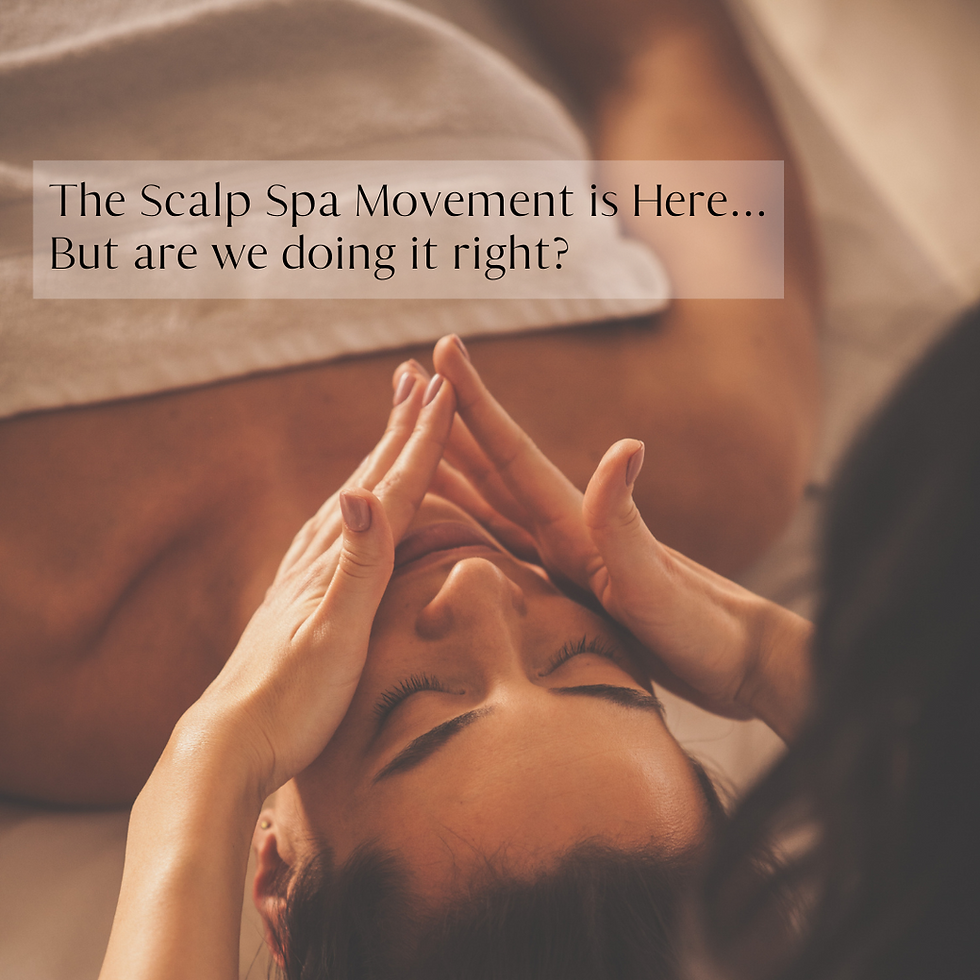The Scalp Spa Trend: A Deep Dive into Scalp Health
- Tabitha Fredrichs

- Apr 19
- 4 min read
Updated: May 6

Let’s talk about the scalp spa trend (also known as the "head spa" craze) that is taking over the beauty industry faster than dry shampoo on fourth-day hair. You’ve probably seen videos featuring relaxing scalp massages, misty machines, dreamy head wraps, bubbles, and serums. People look like they are melting into chairs like butter on toast. And don’t get me wrong—it looks amazing. Self-care? Yes, please. Scalp health awareness? I’ve been preaching that for years.
But here’s the truth no one is saying out loud: just because it looks good on Instagram doesn’t mean it’s good for your client’s scalp. If you’re a hair professional offering scalp services without knowing how to read the scalp and hair through a dermascope first, you might be doing more harm than good.
Let’s discuss this vital topic!
Understanding Your Client’s Scalp
Every scalp tells a story. Some are whispering, “I'm inflamed,” while others are screaming, “I’m suffocating in build-up!" A few may even be downright crying for help. The problem is many people are diving into this scalp spa movement with zero understanding of what they’re actually observing.
What to Look For
Before we start layering on products, we need to identify what’s going on with the scalp. Is there dryness? Yeast? Inflammation? Early signs of alopecia? We can’t just slather on every scrub and serum like we’re in a Build-a-Bear Workshop. This is where the dermascope becomes your best friend. It’s akin to putting on glasses when you’ve been squinting your whole life. Suddenly, you can see:
Terminal & Vellus follicles
Micro-papules
White plugs
Product buildup
Inflammation
Miniaturization
Once you can see these elements, you can stop guessing and start guiding.
The Importance of Scalp Health
Understanding scalp health isn’t just for aesthetics—it can impact hair growth, overall skin condition, and even mental well-being. When your clients leave a spa feeling rejuvenated, they should also understand the importance of scalp care. Some professionals may ignore the scalp’s condition and jump straight to treatments, which can lead to long-term consequences.
Lotions, Potions, and Potential Problems
I love a good botanical oil as much as the next holistic Trichologist. But when we apply oils or exfoliants without knowing the root cause, we may be clogging follicles, irritating already inflamed skin, or altering the scalp’s microbiome in the wrong direction. Think about it: Would you treat a broken ankle with a pedicure? Nope. So why are we treating inflammation with peppermint oil?
When someone has a compromised scalp barrier, an overgrowth of yeast, or early signs of scarring alopecia, the wrong product can trigger a full-blown flare-up. You're not just providing a spa day—they're leaving with accelerated hair loss and a bottle of regret.
The key here is to connect the dots between products and scalp conditions. Make informed choices based on your analysis, and always prioritize your client's health over trends.
Not All Head Spas Are Created Equal
If you’re a client reading this: Please don’t book a scalp treatment just because someone on TikTok told you that you have build-up. Ask questions:
Do they use a dermascope before your service and explain what they are seeing?
Do they inquire about your medical history or medications?
Can they clarify the why behind the products they’re using?
Do they understand how to support the skin barrier instead of stripping it?
And if you’re a professional offering scalp services: This is your wake-up call to become the expert your clients think you already are.
The Hair Industry Is Shifting—Be Part of It
Let’s be real: The future of the hair industry isn’t just about balayage and blonding. It’s biology. It’s understanding the skin. It’s reading the hair follicle like a roadmap to someone’s internal health. This is the movement.It isn’t just about making people look good. It’s about helping them feel heard, healed, and informed.
Professionals who invest in learning about scalp and hair disorders aren’t just offering services—they're changing lives. They’re the ones getting featured in magazines, landing podcast interviews, and creating viral content rooted in science.
Taking Action: What Should You Do?
If you're a stylist or spa owner, here are steps to consider:
Learn how to use a dermascope.
Get educated on common scalp conditions and what they look like.
Understand the skin barrier, scalp pH, and how to support it.
Stop copying what others are doing and start learning why it works.
If you’re a client:
Start viewing your scalp as skin—because that’s exactly what it is.
Choose professionals who aren’t afraid to say, “Let’s find the root of this.”
The Head Spa Isn’t a Trend—It’s a Turning Point
The world doesn’t need more trend chasers. It needs scalp leaders. Hairstylists: Your role is evolving. You’re no longer just the person who covers up damage—you’re the person who helps your clients understand what’s causing it. And that is powerful.
Let’s stop offering treatments that look relaxing and start providing treatments that actually help. The scalp spa movement isn’t about more foam or fancier machines. It’s about education, intentionality, and impact.
And I’m here for it.
Tabitha
CEO of TrichoEDU





Comments